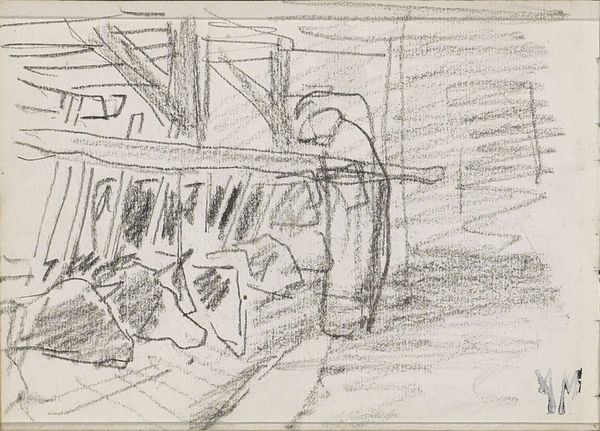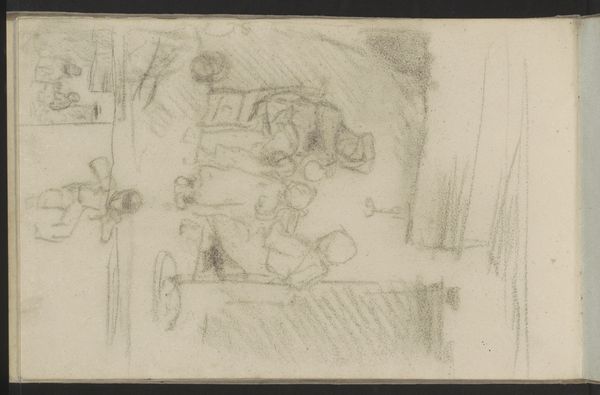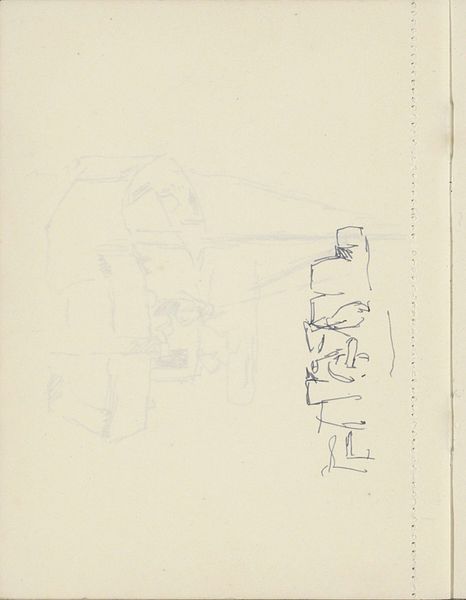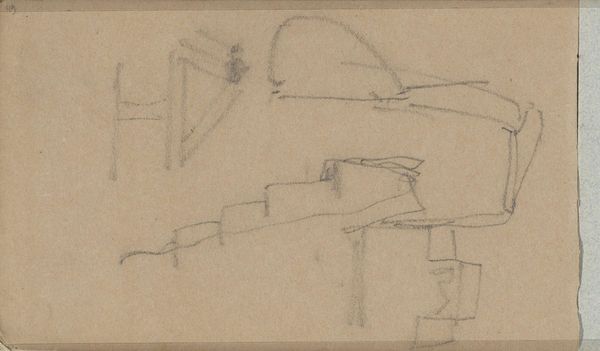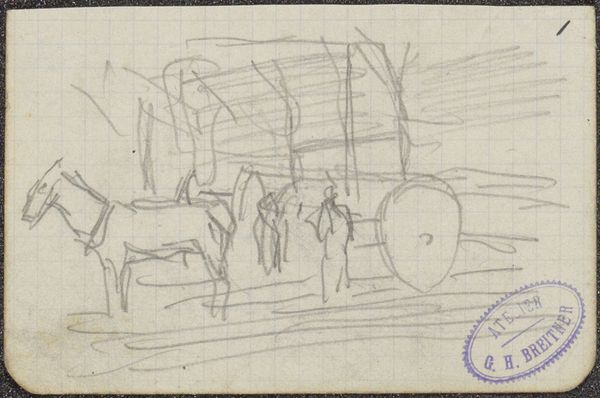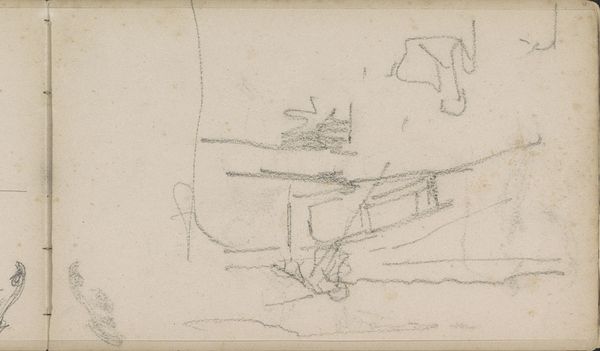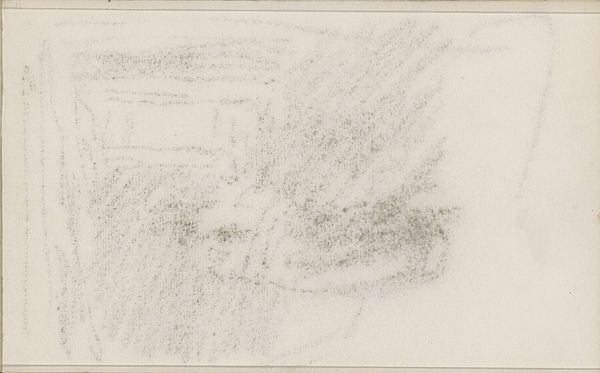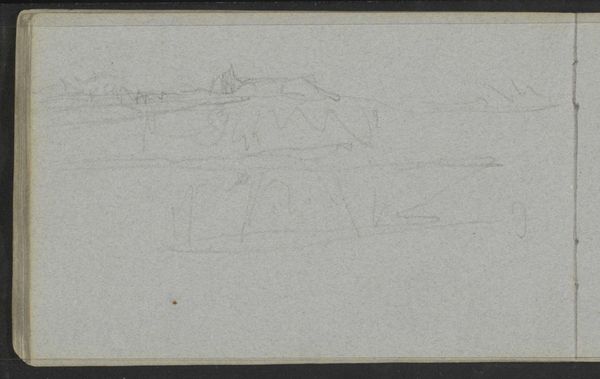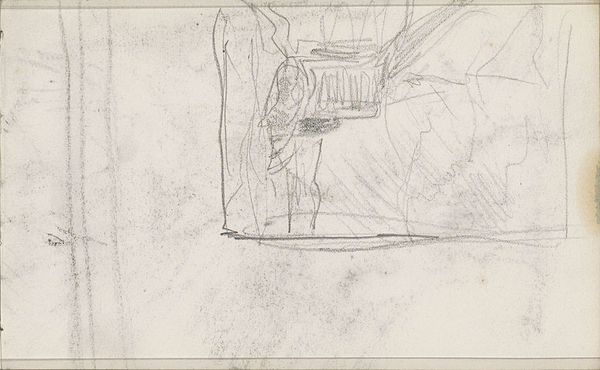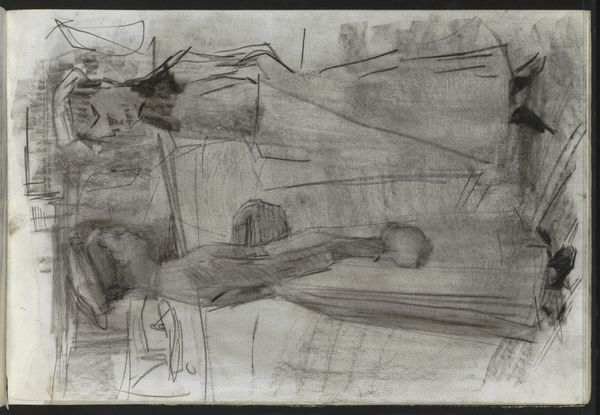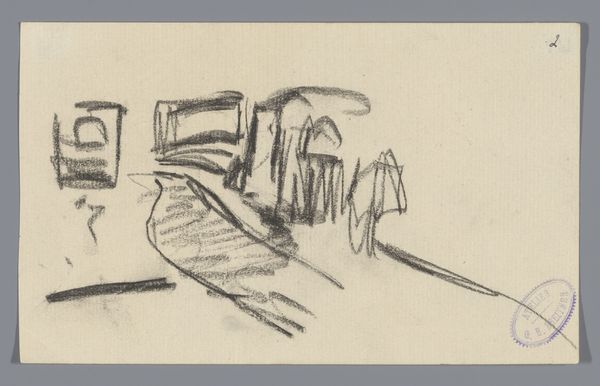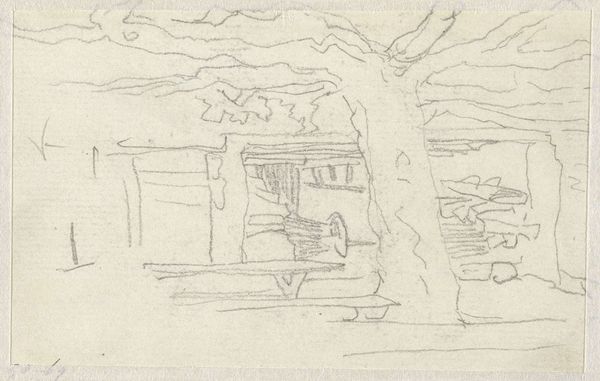
Boereninterieur met een tafel en rekken met borden aan de wand 1854 - 1914
0:00
0:00
#
amateur sketch
#
table
#
aged paper
#
toned paper
#
sketch book
#
incomplete sketchy
#
personal sketchbook
#
detailed observational sketch
#
sketchbook drawing
#
sketchbook art
#
watercolor
Copyright: Rijks Museum: Open Domain
Curator: This is "Boereninterieur met een tafel en rekken met borden aan de wand," or "Farmhouse Interior with a Table and Shelves with Plates on the Wall" by Albert Neuhuys, dating roughly from 1854 to 1914. It’s currently held here at the Rijksmuseum. Editor: My first impression is the artist has created a record of everyday life in a specific setting through the lens of personal observation. The stark, linear form-finding reveals an early phase in what perhaps became a larger painting later. Curator: Precisely. I’m intrigued by how Neuhuys represents rural domesticity through objects. Notice the table, the neatly stacked plates—these elements speak to the material realities of working-class families during this period. What does this imply about their identity, their gender roles, and social class? Editor: Good question. The sketch book quality to me emphasizes the relationship between art-making, observation, and labor, highlighting how Neuhuys engaged with his subject matter in a hands-on manner, emphasizing the materiality of his work and it represents. It begs us to inquire whether it represents a certain lifestyle authentically or reinforces stereotypes of rural workers as subjects. Curator: Right, the act of sketching becomes a political act—either challenging or perpetuating societal views of class. Editor: How can we understand this particular sketch within the broader context of Neuhuys’ larger body of work and that historical period? And also, is that a specific kind of furniture? A Dutch dresser perhaps? Understanding these object histories enriches the work’s political texture, adding nuances that are critical in art historical and contemporary discourses. Curator: Absolutely. Also, examining the sketchbook as material—paper, graphite— what can those details suggest about the artist's training, the cost and availability of those materials? In asking those questions, we gain a richer context regarding the sketch book as a whole. Editor: Definitely, that's right in line with asking, where would this drawing be done? What does the materiality suggest of labor relations within Neuhuys' world and within the world he’s capturing? Thanks to such perspectives, this piece invites ongoing consideration. Curator: Yes, it prompts crucial dialogues. Editor: Agreed, enriching our appreciation.
Comments
No comments
Be the first to comment and join the conversation on the ultimate creative platform.
